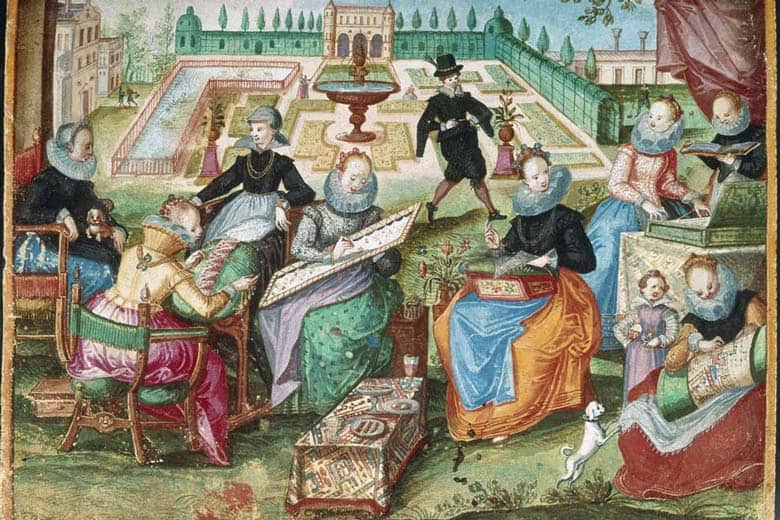It seems that ever since humankind learned to make needles and thread to stitch together clothes, we’ve seen the potential of stitching to go beyond the utilitarian and into high art. Archaeological evidence shows that the use of stitching as decoration goes as far back as our Cro-Magnon ancestors 30,000 years ago, and has become a booming industry today. What’s the history of this ancient, universal art, the history of embroidery? This article will give you a brief look at some of the developments in embroidery throughout history that lead to the art as we know it today.
Origins
While the precise time period people began practicing embroidery is unknown, the earliest surviving piece historians know of is from china’s warring states period. It’s an embroidered silk gauze garment made with luxurious materials and freehand techniques we still see used today. Most embroidered pieces in the ancient world were clothing items, but there is evidence that embroidery as pure art was practiced as far back as the iron age, or 1300BC – 600BC.
In Ancient Cultures
Due to the ephemeral nature of embroidery materials, not too many ancient pieces have survived today. The majority of what historians know about embroidery in ancient cultures comes from paintings, vases, and sculptures depicting people of various ancient cultures wearing embroidered clothing. These date as far back as 3000 years and can be found in Greek, Babylonian, Syrian, Byzantine, and all kinds of other cultures. Each had their own distinct styles, drawing imagery from their unique folklore and incorporating local techniques and materials for adornment.
In Europe
The oldest surviving piece of embroidery in Europe is a piece of clothing originating from 9th century Sweden, a time commonly known as the “Viking Age”. It wasn’t until a couple centuries later that embroidery would spread throughout the powerful European upper class as a demonstration of wealth. This is the era that produced the world-famous Bayeaux Tapestry, an epic retelling of the Norman invasion of England told in thread and fabric.
The Industrial Revolution
In the 1900s, the cheaper materials and streamlined processes of the industrial revolution allowed embroidery to spread beyond just the wealthy. Printed catalogs allowed techniques to spread quickly, and pre-made patterns such as those by Berlin wool work allowed anybody to easily create beautiful works of embroidery. It’s also at this time that we saw William Morris’ Arts & Crafts Movement, a backlash to the automation of the Industrial Revolution and a revival of hand-crafted needlework.
Machine Embroidery
The above-mentioned automation also laid the foundation for the type of embroidery most common today: machine embroidery. Sewing machines and later specialized embroidery machines were used by punching designs on paper tape, but it wasn’t until 1980 that the first computer graphics system for making embroidery designs was developed by Wilcom. Graphic systems like this are what most commercial embroidery companies use to stitch clients’ designs onto garments and other branded products today.
This is also the type of embroidery services we provide here at RiverCity Screenprinting & Embroidery; if you’re interested in those or our screnprinting services in Austin, San Marcos, or the surrounding areas, contact us today for a free quote.

